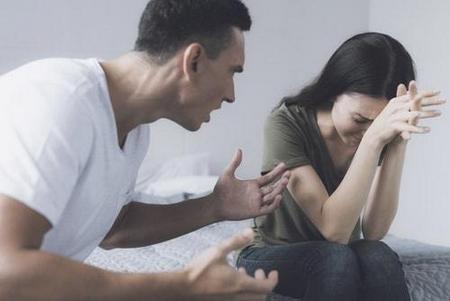Arlington Heights, IL 60005
Recent Blog Posts
Surviving Your Contested Divorce in Illinois
 Divorces in Illinois can be either contested or uncontested. At the crux of any divorce are the issues of property and debt division, child custody or the allocation of parental responsibilities, and support/maintenance payments. When divorcing couples are able to come to an agreement about these issues, either on their own or through mediation, they can begin an uncontested divorce. Although every divorce involves at least some degree of disagreement, these disagreements do not always require court intervention. On the other hand, spouses who cannot come to an agreement on their own must undergo a contested divorce.
Divorces in Illinois can be either contested or uncontested. At the crux of any divorce are the issues of property and debt division, child custody or the allocation of parental responsibilities, and support/maintenance payments. When divorcing couples are able to come to an agreement about these issues, either on their own or through mediation, they can begin an uncontested divorce. Although every divorce involves at least some degree of disagreement, these disagreements do not always require court intervention. On the other hand, spouses who cannot come to an agreement on their own must undergo a contested divorce.
What Is a Contested Divorce?
Contested divorces are those in which spouses cannot reach a decision as to the terms of the divorce and must therefore go to trial. Contested divorces can be more expensive and time-consuming than uncontested divorces, so most experts suggest avoiding this route. However, in some cases, such as when one or both spouses are unwilling or unable to cooperate, a contested divorce is necessary.
Should I Pursue a Legal Separation Before Divorcing My Spouse in Illinois?
 If you and your spouse are considering ending your marriage, you may have questions about legal separation. Although divorce is the most common way a married couple splits, it is not the only option Illinois couples have. A legal separation is a special court order that dictates the rights and responsibilities of a couple. A legal separation does not technically end a marriage, but it functions very similarly to a divorce. Although legal separations are less common than divorce, they can be a beneficial legal tool for spouses who have personal or financial issues upsetting the marriage. There are advantages and disadvantages to both divorce and legal separation. A qualified Illinois family law attorney can help you further understand which option is best for your unique family and financial situation.
If you and your spouse are considering ending your marriage, you may have questions about legal separation. Although divorce is the most common way a married couple splits, it is not the only option Illinois couples have. A legal separation is a special court order that dictates the rights and responsibilities of a couple. A legal separation does not technically end a marriage, but it functions very similarly to a divorce. Although legal separations are less common than divorce, they can be a beneficial legal tool for spouses who have personal or financial issues upsetting the marriage. There are advantages and disadvantages to both divorce and legal separation. A qualified Illinois family law attorney can help you further understand which option is best for your unique family and financial situation.
Differences Between Divorce and Legal Separation
The most important difference between legal separation and divorce is that a legally separated couple remains legally married whereas a divorced couple is no longer legally married. Some couples choose a legal separation instead of a divorce specifically because this option allows them to stay legally married. Remaining legally married is important to some for cultural or religious reasons. A separation also preserves most healthcare and social security benefits that are generally terminated through a divorce. Divorce ends spouses’ rights to property benefits upon the death of the other, but couples with a legal separation still have property rights.
Understanding the Basics of Parenting Plans in Illinois
 Among all of the decisions made during a divorce, issues pertaining to children are some of the most important elements that must be settled. These issues can include parenting time, decision-making responsibilities, and other child-centered concerns. All of these things will be covered in a parenting plan, which Illinois requires as a part of your divorce settlement if you have children. Parenting plans are written agreements that outline all legal issues, from which parent has a child and when to how decision-making responsibilities will be shared or divided. Parenting plans can be difficult to negotiate, but they can save a lot of headache in the future.
Among all of the decisions made during a divorce, issues pertaining to children are some of the most important elements that must be settled. These issues can include parenting time, decision-making responsibilities, and other child-centered concerns. All of these things will be covered in a parenting plan, which Illinois requires as a part of your divorce settlement if you have children. Parenting plans are written agreements that outline all legal issues, from which parent has a child and when to how decision-making responsibilities will be shared or divided. Parenting plans can be difficult to negotiate, but they can save a lot of headache in the future.
Elements of a Parenting Plan
Before you go before a judge to determine a parenting plan, Illinois courts allow you and your spouse to come up with your own agreement. If you cannot come up with your own parenting plan, you will be ordered to attend mediation to help you formulate a plan. If you still cannot come to an agreement, you will have to attend a court hearing so a judge can make decisions pertaining to your parenting plan.
How to Survive the Holidays After Your Illinois Divorce
 For many people, December means delicious food, spending time with family, exchanging presents, and enjoying the season. Unfortunately, for many families, the holiday season also means a time of stress and emotional tug-of-war. When parents are divorced, the holiday season can be difficult, because not only must they decide when they each will have the children, but they will also need to juggle all of the events that take place during the holidays, such as plays, concerts, recitals, holiday parties, and gift exchanges.
For many people, December means delicious food, spending time with family, exchanging presents, and enjoying the season. Unfortunately, for many families, the holiday season also means a time of stress and emotional tug-of-war. When parents are divorced, the holiday season can be difficult, because not only must they decide when they each will have the children, but they will also need to juggle all of the events that take place during the holidays, such as plays, concerts, recitals, holiday parties, and gift exchanges.
Here are a few ways that divorced parents can have a joyful and happy holiday season:
Plan Well in Advance
Like most things in your co-parenting relationship, a successful holiday season will largely depend on how you plan for it. Ideally, both you and your ex will be able to attend all of your children’s events. If you cannot stand to be in the same room as each other, make a plan to pick and choose which events you will be attending and which events you will sit out.
4 Surprising Benefits That Come With a Divorce
 It is no secret that divorce can be difficult on everyone involved. Some people feel like their divorce makes them a failure, and children of divorcing parents may worry that the divorce is their fault. However, while a divorce is most often seen as a negative event, it can be one of the most positive things you can do for yourself and your family. Even though it may not feel like it, especially right after your divorce is finalized, a divorce can be a good thing. Here are four ways your divorce can benefit you and your family:
It is no secret that divorce can be difficult on everyone involved. Some people feel like their divorce makes them a failure, and children of divorcing parents may worry that the divorce is their fault. However, while a divorce is most often seen as a negative event, it can be one of the most positive things you can do for yourself and your family. Even though it may not feel like it, especially right after your divorce is finalized, a divorce can be a good thing. Here are four ways your divorce can benefit you and your family:
1. You Can Finally Relax
After you get a divorce, it can feel like a massive weight has been lifted off of your shoulders. You will no longer need to feel like you have to tiptoe around the house, hoping to avoid your combative spouse. You no longer have to worry about every single one of your decisions being met with contradiction and arguments. You can finally sit back, relax, and have some time for yourself.
Lower Divorce Rate May Be Attributed to Millennial Attitudes Toward Marriage
 For decades, relationship studies suggested that couples who moved in together prior to getting married were more likely to get divorced than those who waited until after the wedding. While there may have been some truth to those numbers, they now seem to be moving in the opposite direction. Today, more couples than ever are cohabitating prior to marriage, yet the divorce rate is on the decline, and sociologists and other experts are starting to think that the two may be related.
For decades, relationship studies suggested that couples who moved in together prior to getting married were more likely to get divorced than those who waited until after the wedding. While there may have been some truth to those numbers, they now seem to be moving in the opposite direction. Today, more couples than ever are cohabitating prior to marriage, yet the divorce rate is on the decline, and sociologists and other experts are starting to think that the two may be related.
A New Approach to Love
The generation known as the Millennials is comprised of those born roughly between the early 1980s and the late 1990s. A large number of Millennials are now in their late 20s and early 30s, and the way in which they, as a group, are approaching committed relationships much differently than their predecessors. Young people, in general, are waiting longer to get married, but they are much more likely to move in with a romantic partner than ever before.
Divorce and the Dangers of Social Media
 Since its launch in 2004, Facebook has become one of the most popular concepts in the history of the world. Recent statistics place the number of active monthly Facebook users at an astounding 2.27 billion, or more than a quarter of the world’s population. The site has become a platform for users to share details about their lives with one another in the form of text-based posts, photos, videos, and much more. Problems, however, often arise when the use of Facebook and other social media outlets continues unfettered through the divorce process.
Since its launch in 2004, Facebook has become one of the most popular concepts in the history of the world. Recent statistics place the number of active monthly Facebook users at an astounding 2.27 billion, or more than a quarter of the world’s population. The site has become a platform for users to share details about their lives with one another in the form of text-based posts, photos, videos, and much more. Problems, however, often arise when the use of Facebook and other social media outlets continues unfettered through the divorce process.
Reality vs. Social Media
Research has long suggested that the version of one’s self that is presented to the world on Facebook, Twitter, or Instagram is frequently exaggerated. Social media users carefully construct their public image, focusing on the positive, and tending to ignore the less attractive elements of life. While most of us know at least a few people who spend most of their time on social media complaining or making vague, unhappy-sounding posts, most users project an artificially inflated social media persona that is healthier, more fun, more ambitious, and more successful than the person may be in reality.
Warning Signs You Are in an Abusive Relationship
 Domestic violence affects every gender, race, and income level. Sadly, abusive relationships can happen to anyone. Many people are fully invested in a romantic relationship before they realize that it is becoming abusive. This can make it even more difficult for victims of domestic violence and abuse to leave these relationships. If you are in a relationship you think may be abusive, read on to learn about some of the first signs of domestic violence in romantic relationships.
Domestic violence affects every gender, race, and income level. Sadly, abusive relationships can happen to anyone. Many people are fully invested in a romantic relationship before they realize that it is becoming abusive. This can make it even more difficult for victims of domestic violence and abuse to leave these relationships. If you are in a relationship you think may be abusive, read on to learn about some of the first signs of domestic violence in romantic relationships.
Domestic Violence Defined
Although domestic violence can involve non-romantic close relationships like parent-child, domestic violence at the hands of a romantic partner is the most common type. Also called intimate partner violence, domestic violence includes behaviors that hurt, scare, threaten, or prevent a partner from being independent. It can involve physical and sexual violence, intimidation, emotional or psychological abuse and financial exploitation. Many abusive individuals may seem charming and loving at the beginning of a relationship, but then start showing their true colors.
Commercial Drivers and CDL Violations
 If you are a professional driver, your commercial driver's license (CDL) is probably one of the most valuable documents you have. Without it, you cannot legally do your job and may suffer significant financial hardship. Getting a CDL is not something just anyone can do. As a CDL holder, you are held to a higher standard of driving conduct than those with standard driver’s licenses. If you are a professional driver in Illinois or hold a CDL for other reasons, it is imperative that you understand your rights and responsibilities. Read on to learn how traffic violations can put your commercial driver’s license at risk and what to do if you have been charged with a traffic violation.
If you are a professional driver, your commercial driver's license (CDL) is probably one of the most valuable documents you have. Without it, you cannot legally do your job and may suffer significant financial hardship. Getting a CDL is not something just anyone can do. As a CDL holder, you are held to a higher standard of driving conduct than those with standard driver’s licenses. If you are a professional driver in Illinois or hold a CDL for other reasons, it is imperative that you understand your rights and responsibilities. Read on to learn how traffic violations can put your commercial driver’s license at risk and what to do if you have been charged with a traffic violation.
Laws Are Stricter For Commercial Drivers
Most people with a CDL are tasked with transporting others or operating large vehicles like tractor-trailers, flatbeds, box trucks, buses, or dump trucks. Larger vehicles can obviously do much more damage than average-sized vehicles when operated in an unsafe manner. CDL holders have a greater responsibility to operate their commercial motor vehicle in a manner that protects the safety of pedestrians and other drivers. Consequently, commercial drivers face more severe punitive repercussions when they do commit a traffic violation. Traffic violations that could put your CDL in jeopardy include:
What Young Drivers Should Know About Traffic Stops
 Most people can remember the feeling of independence that came with getting their driver’s license for the first time. On the other hand, most can also remember the nearly overwhelming fear that took over the first time they were pulled over by the police. Being stopped for a suspected traffic violation is intimidating for many drivers, including those who have been driving for decades. Younger drivers, however, often experience even more stress when they are pulled over, leading to confusing and potentially dangerous situations. Fortunately, lawmakers in Illinois have taken steps to prepare young drivers on how to handle being stopped by the police.
Most people can remember the feeling of independence that came with getting their driver’s license for the first time. On the other hand, most can also remember the nearly overwhelming fear that took over the first time they were pulled over by the police. Being stopped for a suspected traffic violation is intimidating for many drivers, including those who have been driving for decades. Younger drivers, however, often experience even more stress when they are pulled over, leading to confusing and potentially dangerous situations. Fortunately, lawmakers in Illinois have taken steps to prepare young drivers on how to handle being stopped by the police.
Helping New Drivers Learn the Rules of the Road
Approximately two years ago, Illinois Governor Bruce Rauner signed a bipartisan measure requiring all driver’s education classes in the state to include a section on how to behave during a traffic stop. The bill’s timing coincided with a number of horrific, headline-making examples of traffic stops that escalated and spiraled out of control—some of them resulting in tragedy. The new law went into effect in 2017 and has affected driver’s education classes at public schools, private schools, and private training programs.












